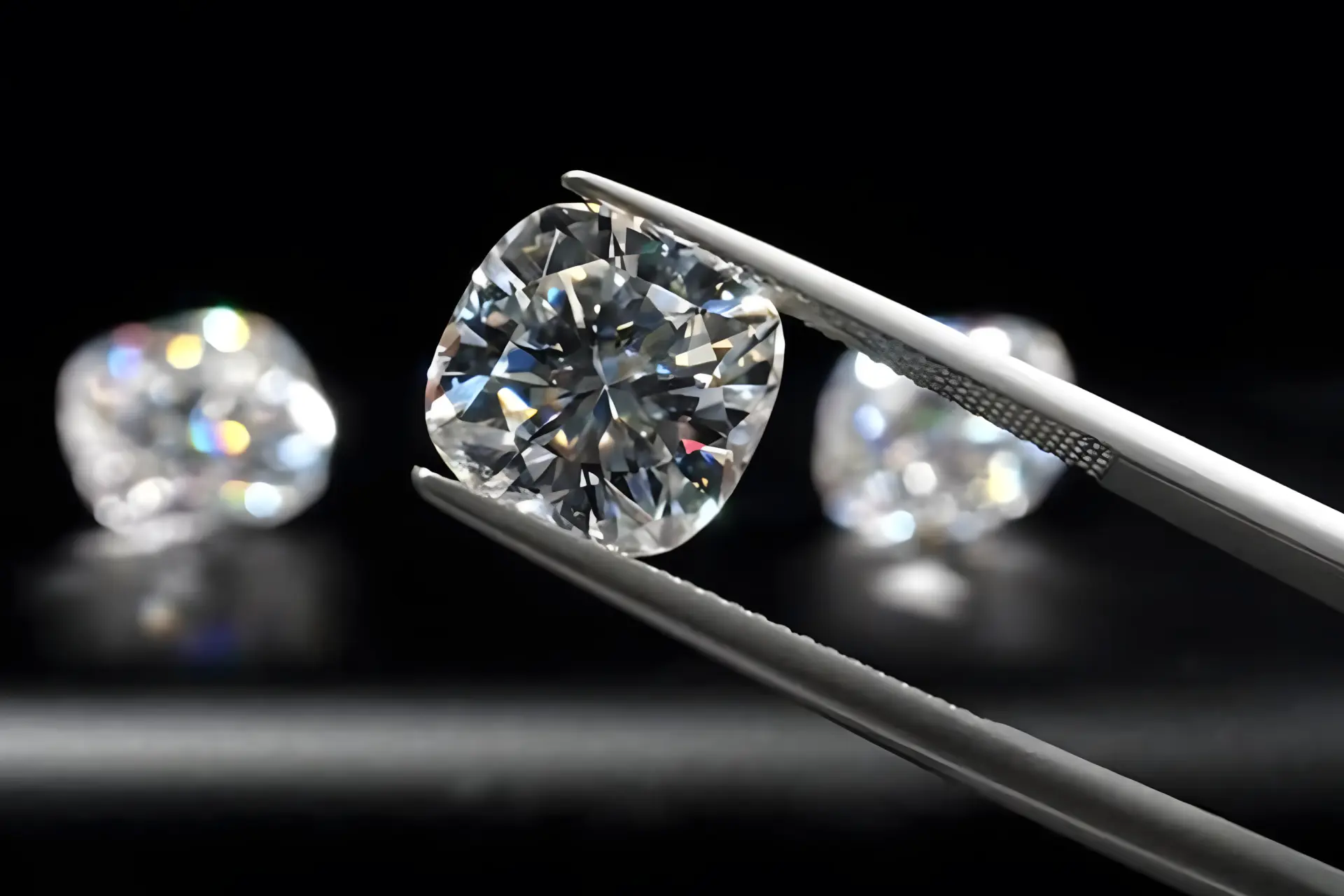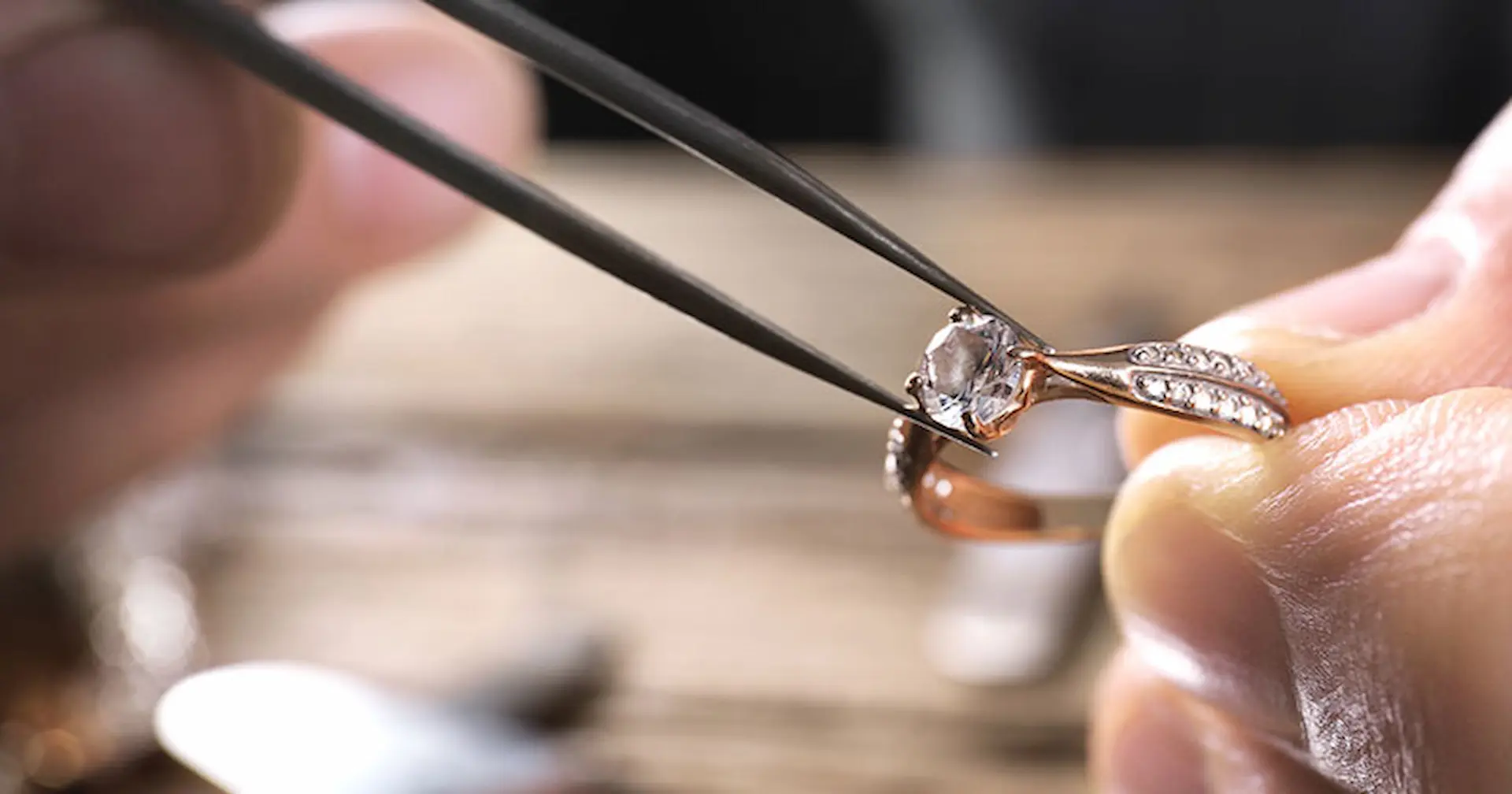Ensuring the Jewelry Authentication is crucial to protecting your investment and ensuring you get what you pay for. Whether you’re buying a new piece or appraising an antique, knowing how to verify its authenticity can save you a lot of hassle and disappointment.
Jewelry Authentication vs. Jewelry Appraisal: What’s the Difference?
Jewelry authentication and jewelry appraisal are two different processes that serve different purposes:
Jewelry Authentication
- Objective: To determine whether a piece of jewelry is authentic and genuine, not a fake or imitation.
- Focus: To check the materials used (such as the type of metal and gemstones), hallmarks, certificates of authenticity (if applicable), craftsmanship, and any other indications of the piece’s origin and maker.
- Result: A confirmation or report is issued stating whether the jewelry is authentic and matches its purported status. This typically does not involve assigning a monetary value.
Jewelry Appraisal
- Objective: To determine the monetary value of a piece of jewelry in a specific market and at a specific time.
- Result: A formal appraisal report is issued detailing the characteristics of the jewelry and providing an estimate of its monetary value.

DIY Jewelry Authentication: Basic Checks You Can Do at Home
Here are some basic tests you can perform at home to Jewelry Authentication:
- Gold: Look for numbers like “999” (pure 24-karat gold), “916” (22-karat gold), “750” (18-karat gold), “585” (14-karat gold), or marks like “GP” (gold-plated) or “GF” (gold-filled).
- Silver: Look for marks like “925” (sterling silver), “STERLING,” or “FINE SILVER.” You may also find other marks indicating higher purity.
- Platinum: Look for marks like “PT950,” “PLAT,” or “950.”
- Magnet Test: Pure gold, silver, and platinum are not magnetic. If jewelry is attracted to a strong magnet, it is likely not made of these pure precious metals. (Note that some clasps may contain small magnetic fragments.)
- Density Test (for unstudded gold jewelry): Gold is a dense metal. You can compare the weight of the jewelry to another known piece of gold of approximately the same size. If the suspected piece is much lighter, it may not be solid gold. (This test is not very accurate and requires some knowledge.)
- Scratch Test on an Uncoated Ceramic Plate (for gold jewelry): Gently rub the gold piece on an uncoated ceramic plate. Real gold should leave a gold mark. If it leaves a black mark, it is likely not solid gold. (Test in an inconspicuous area to avoid damaging the jewelry.)
- Water Test (for gold jewelry): Place the gold piece in a cup of water. It should sink quickly because gold is dense. If it floats, it is likely not solid gold or is hollow.
- Acid Test (requires care and caution): Home acid testing kits are available for gold and silver. Apply a small drop of special acid to an inconspicuous area of the jewelry. The acid reaction will indicate the karat of the gold or whether it is real silver. Be very careful when using acids and follow the instructions carefully.
How the Pros Authenticate Jewelry?
Professionals use a variety of methods and tools to Jewelry Authentication, ensuring its authenticity, quality, and value. Here are some of the main methods they use:
- Logos and trademarks: They look for logos of well-known designers or brands, and check for consistency in font, size, placement, and the overall quality of the engraving.
- Hallmarks: They check for hallmarks that indicate the metal’s karat (such as 18K or 925), the piece’s provenance, and sometimes its date of manufacture. They compare these hallmarks to reference databases to ensure their authenticity.
- Craft quality: They examine the precision of the workmanship, the smoothness of the links, the setting of the stones, and the overall finish of the piece. Authentic jewelry often exhibits a high level of craftsmanship.
- Metal condition: They study the color, texture, and signs of wear. For example, an authentic plated piece should retain its plating quality over time. They may conduct chemical tests to detect the underlying metal.
- Gemological quality: They examine the cut quality (learn more in our (Ultimate Guide to Diamond Cuts), color, clarity, and carat (the 4Cs of diamonds). For other gemstones, they look at luster, surface, shape, and color. They may use tools to determine whether the stones are natural, treated, or synthetic.
Methods of Jewelry Authentication: From Hallmarks to Gemstone Testing
Here are ways to Jewelry Authentication, from hallmarking to gemstone testing:
Hallmarking:
- What is it? Hallmarking is the official marking of jewelry made of precious metals such as gold, silver, and platinum. These marks indicate the metal’s carat and purity, the manufacturer, and sometimes the year of manufacture.
- How does it work? The jewelry piece is stamped with one or more small stamps bearing specific symbols and numbers.
- Importance: Hallmarking is a guarantee of the quality and purity of the metal and helps consumers be certain of the value of what they are purchasing.
Gemstone Testing:
- Color and Clarity: Natural gemstones often contain minor natural inclusions and flaws, while synthetic gemstones may appear flawless. However, there are also highly pure natural gemstones. Color and distribution must be carefully examined.
- Cut and Symmetry: The cut of a gemstone should be symmetrical and reflect light well.
- Lusterity: Natural gemstones have a distinctive luster that varies depending on the type of stone.
- Hardness: Some simple hardness tests can provide indications (such as scratching glass with a diamond).
- Fog Test (for Diamonds): Sapphire on a real diamond causes fog that quickly disappears, while fog on imitation stones takes longer to disappear.
Common Issues in Jewelry Authentication and How to Avoid Them
Jewelry authentication faces many problems and challenges, especially with the advancement of counterfeiting techniques and the increasing supply of antique and resale jewelry. Here are some common problems and how to avoid them:
Common Problems:
- Difficulty identifying trademarks and signatures: Designer and brand signatures may change over time, be blurred, or be fake.
- Overlapping styles and designs: It can be difficult to distinguish between an authentic piece from a particular period and one inspired by or imitated.
- Changes in the condition of jewelry over time: Wear, damage, and repairs can alter the appearance of jewelry, making it difficult to determine its authenticity.
- Use of imitation materials: Fake metals and gemstones are used to appear similar to the original, requiring specialized expertise and tools to detect.
- Deliberate falsification of certificates and documents: Certificates of origin and appraisal can be forged to increase the value of a fake piece of jewelry.
How to avoid Jewelry Authentication problems:
- Buy from trusted sources: Deal with reputable, certified jewelers with a history of integrity and transparency.
- Examine the trademarks and hallmarks: Look for hallmarks that indicate the caliber of the metal and the manufacturer or designer. Check the accuracy and quality of these marks.
- Check the craftsmanship: Carefully examine the jewelry for any manufacturing defects, such as rough edges, loose stone setting, or asymmetrical design.
- Check the weight and density of the metal: Precious metals have specific weights and densities. An unusually light weight could indicate that the piece is plated or made of cheap materials. (The magnet test can be used for non-precious metals such as iron and nickel.)
- Examine the gemstones: Request certificates of authenticity for gemstones from accredited laboratories such as GIA or AGS. Examine the stones for any signs of blemishes or undisclosed treatment.
- Request a certificate of authenticity and appraisal: When purchasing valuable jewelry, request a detailed certificate of authenticity from the seller that includes a thorough description of the piece, its components, and its history, if possible. Get an independent appraisal from a certified appraiser.
The Role of Technology in Jewelry Authentication: Advancements and Challenges
Technology is playing an increasingly important role in jewelry authentication, providing innovative solutions to ensure the authenticity and value of these precious collectibles. Here are some key aspects of technology’s role in this field:
- Blockchain technology: This technology can be used to track the journey of raw materials used in jewelry, such as gold and diamonds, from the mine to the final product. This provides a permanent and immutable record, increasing transparency and helping prevent the circulation of unethical or counterfeit jewelry.
- Spectroscopy: This technology is used to analyze the interaction of light with gemstones, as each gemstone absorbs certain wavelengths and transmits others. This produces a unique “spectral fingerprint” for each stone, which helps determine its type, quality, and whether it is natural or treated.
- Pattern recognition: Artificial intelligence and pattern recognition algorithms can be used to analyze images and other data of gemstones and compare them to extensive databases to accurately determine their identity and characteristics.
Expert Tips for Authenticating Vintage and Antique Jewelry
- Hallmarks: Look for hallmarks that indicate the country of origin, maker, and purity of the metal (such as the karat of gold or silver). You may need a magnifying glass to clearly examine these hallmarks. Hallmarks vary across eras and countries, so knowing these hallmarks is crucial.
- Design Style: Learn about the different artistic and design styles that were popular in different time periods (such as Art Deco, Victorian, and Edwardian). The design of the piece should match the prevailing style of the time period to which it is claimed to belong.
- Materials: Examine the materials used. Do the gemstones and metals match what was popular in that period? For example, some modern types of pieces may not be found in antique jewelry.
- Craft Quality: Antique pieces showcase expert craftsmanship, like hand-engraved details absent in mass-produced modern jewelry.. Look for signs of handcrafting, such as slight asymmetry or unique details not found in modern mass production.
- Magnet Test: Precious metals such as gold, silver, and platinum are not attracted to magnets. If a piece of jewelry is attracted to a magnet, it is likely not made of precious metals or contains other metals. Acid Testing (best left to an expert): Special acids can be used to test the purity of precious metals. Acids react differently with different karats of gold and silver. This test should be performed by an expert to avoid damaging the piece.
- Density Testing (best left to an expert): Precious metals have a certain density. The density of a piece of jewelry can be measured and compared to the known density of the original metal.
- Seller History and Reputation: Buy from trusted sellers who specialize in antique and vintage jewelry. Check their reputation and ratings.
- Accompanying Documentation: If the piece comes with any documentation such as certificates of origin or previous appraisals, examine them carefully and verify their authenticity.
- Search for Similar Pieces: Try searching for similar pieces of jewelry online, in museums, or in antique jewelry books to verify style, materials, and hallmarks.
Jewelry authentication is the process of verifying the authenticity and quality of a piece of jewelry. This process is essential to protect buyers from fake or counterfeit jewelry and ensure they get value for their money.





